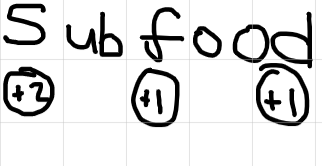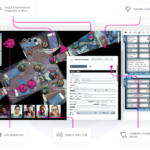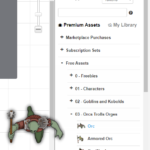Welcome to LLST’s Digital Facilitation Tools Series. In this series we will cover a selection of digital tools, each of which can be used to help facilitate online trainings, simulations, and serious games. Every post in this series will provide an overview of one product, discuss that product’s strengths and weaknesses, examine its accessibility and ease of use, and describe how we see it fitting into the world of online simulation and training. Our series will focus on products that are affordable and easy to access; we plan to showcase a wide variety of tools to help you get started creating your own digital simulations!
Today’s Digital Facilitation Tool is: Roll20.
What is Roll20?
Roll20 is a free browser-based program that comes equipped with a large swath of tools aimed towards running tabletop role-playing games, including the ever-popular Dungeons and Dragons. Roll20 is unabashedly a site dedicated to games and gaming and it does not try to hide this fact from its users. Plastered across its pages are advertisements for all the latest fantasy-themed features: tokens of elves and orcs, obscure rulebooks, and map tiles for dungeons and space ships. However, as the COVID 19 pandemic forces tabletop games into the online realm, Roll20 and its peers (including Fantasy Grounds and Map Tool) is seeing a surge in users that are not only looking for escapist play. Simulation and serious-game designers may find Roll20 to be a useful and accessible tool for recreating tabletop simulation experiences online— as long as they can look past its frivolous wrapping.
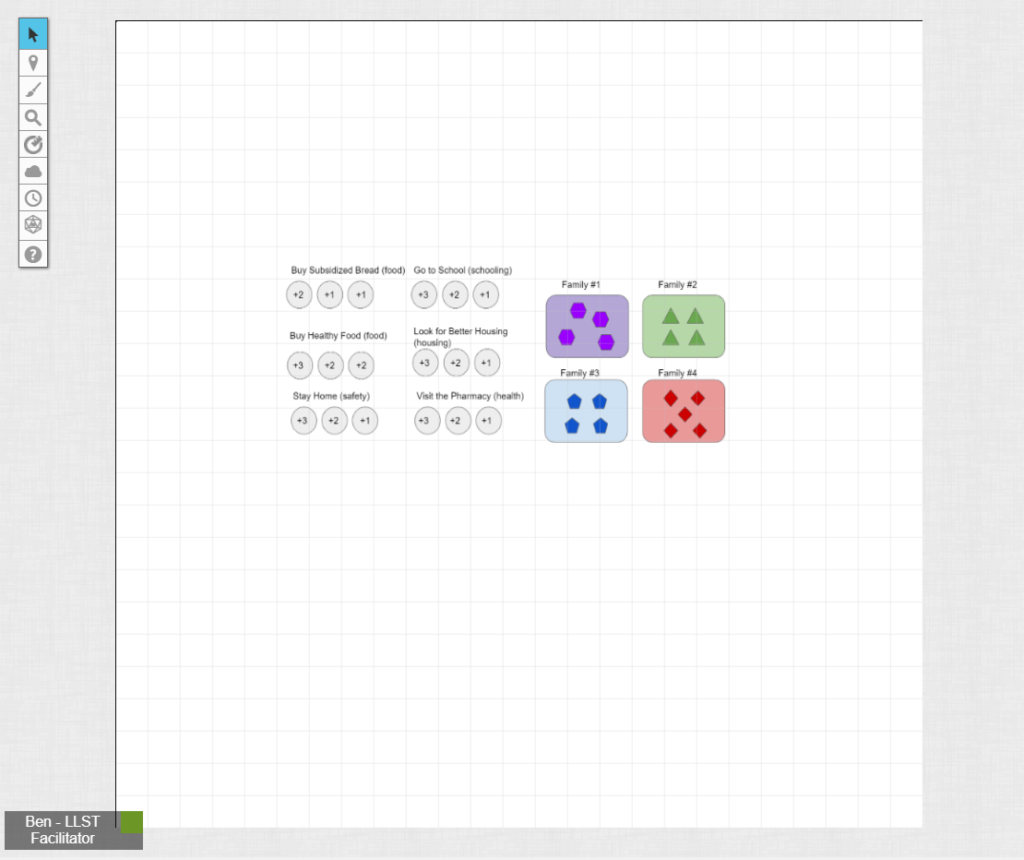
Roll20 allows users to set up “Campaigns” (a phrase borrowed from D&D), where a host can bring together a group of individuals around a series of virtual tabletops. The vast majority of Roll20’s functionality revolves around its tabletop, where users can create their own maps, game boards, pieces, and tokens which can then be manipulated by participants based on a series of permissions. This digital tabletop space comes with a grid based map, a set of virtual dice, a turn tracker, a deck of cards, and text, voice, and video chat capabilities. Roll20 allows users to draw on their page or import images files in order to customize their game boards in any way they like, and even free account users can build multiple tabletops inside a single game. However, Roll20 does not easily support multiple participants accessing different tabletops at once.
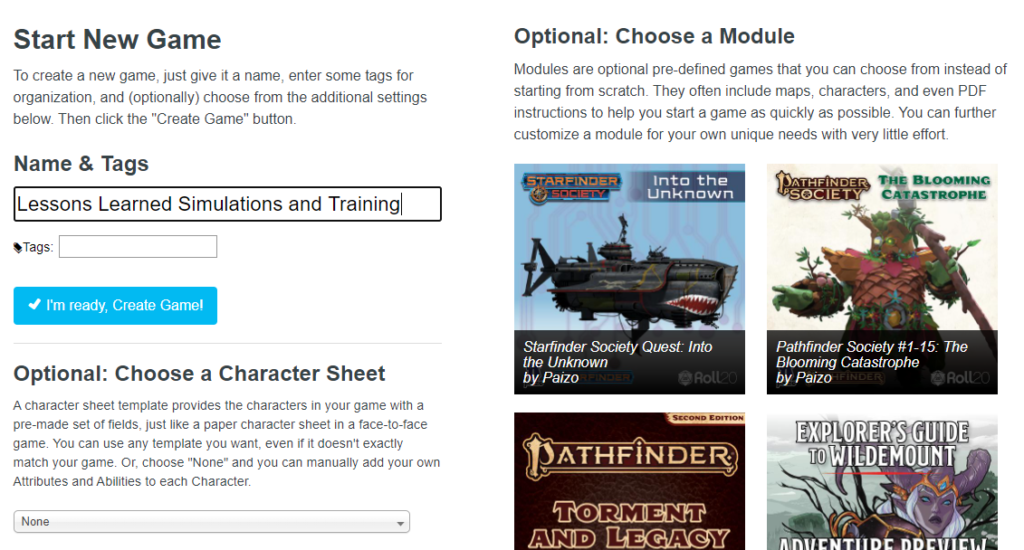
Roll20 could be the perfect platform for certain simulation designs, while proving entirely useless for other designers. Read on to decide if Roll20 fits your specific needs.
Where Do I Find Roll20?
You can find Roll20 at its website: roll20.net.
Accessibility, Pricing, and Ease of Use
Roll20 requires an account from any prospective host or participant, and it is straightforward to sign up for a free account. Setting up an account, starting a new game, sending out invites, and accessing your first digital tabletop can all be achieved in a matter of minutes.

There are two paid membership levels: Plus and Pro which cost USD$49.99 and USD$99.99 per year, respectively. Most of the features provided by these upgraded plans are only helpful for those who are using Roll20 for its intended function: facilitating tabletop role-playing games online. Perhaps your simulation training design plans to integrate the rules of one of these popular games? But if not, readers of this series will probably not need to access advanced features that include rulebook access, rulebook sharing, character sheet transfers, and dynamic lighting.
Although Roll20 is easy to access, its tools for customizing your tabletop experience can be cumbersome and confusing, making the design experience on Roll20 simultaneously simple to start but frustrating to execute. For myself, it took a lot of practice to improve my utilization of Roll20 from digital whiteboard into digital tabletop.
Roll20 offers 18 different supported languages, but all non-English languages are contributed by volunteer efforts and via Google Translate. For those reading this article in anticipation of our Jordanian workshops, Arabic is unfortunately not one of the supported languages on Roll20.
Technical issues with Roll20 are normally solved with a simple refresh of the browser window. However, technical issues surrounding the voice and video components seem to pop up often, and are not so easily solved.
What Are Roll20’s Strengths?
Again, Roll20 succeeds at its goal of providing a quality digital tabletop space with all the bells-and-whistles that are necessary for running recreational tabletop role playing games. If there is any crossover between these games and your simulation design, Roll20 will prove a useful tool.
For example, rolling dice comes easily to Roll20. Participants and facilitators can use Roll20’s “advanced dice roller” to roll any number of dice with any number of sides. Whether you are recreating the physical experience or simply aiming to add randomization to your simulation, these dice are an excellent tool. Perhaps a designer wants to use statistics to influence the participants’ experience— a proposed humanitarian project has a 37% chance to be funded, something to that effect— a facilitator may “roll” a 100-sided dice to create a percentage and determine the outcome. Participants can also easily roll dice in Roll20, while facilitators may roll them both secretly and out in the open.
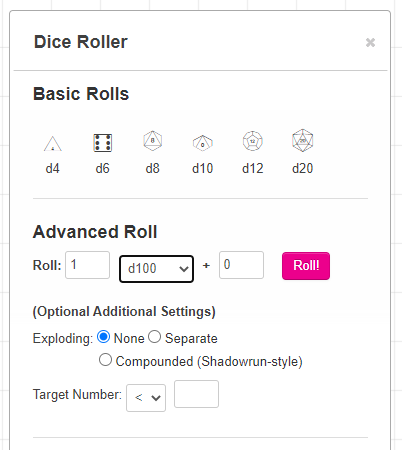
In fact, the ability for facilitators to pick-and-choose what information they show to participants is built into almost all the aspects of Roll20. When building the tabletop area, for example, facilitators may leave themselves notes, build pieces of the board, and create tokens or game pieces—all of which may remain invisible to participants until revealed by the facilitator. When facilitators create multiple tabletops or maps for their participants, they get to choose which space is visible and which others are hidden. It is also straightforward to send hidden information to participants or assign them specific tokens or pieces to manipulate. If a designer is at all concerned with users “seeing behind the curtain,” then Roll20 has tools to make sure information only flows in the correct channels.
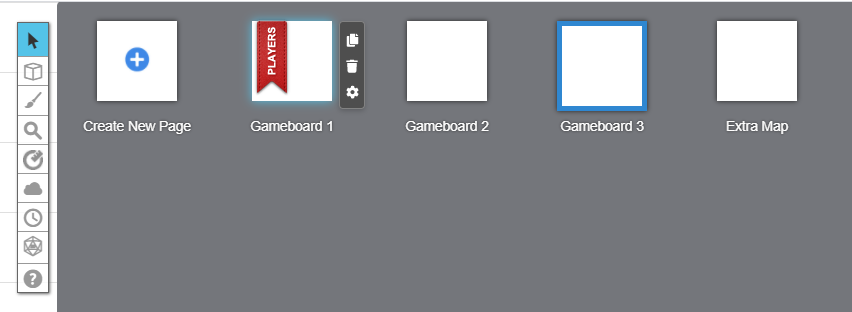
It must also be stated how rare it is to find a platform like Roll20: a free and accessible tabletop space that works for a wide variety of needs. While there are weaknesses to the program (see below) and while Roll20 is certainly not the only program of its kind, it maintains its popularity by providing a consistent product in a niche environment. The built-in drawing tools are enjoyable to use, adaptable to a designer’s needs, and even come with rudimentary layering features. Yes, Roll20’s moveable tokens are mostly fantasy monsters, wizards, and knights in shining armour— but they are provided free-of-charge. Any designer who has struggled transferring an in-person experience into an online-experience knows how valuable it is to have a container like Roll20 where multiple users can easily manipulate objects around a tabletop in real time. For this ability alone, Roll20 is worth your time. And like many other programs in our DFT Series, Roll20 has the ability to add in pre-programmed “macros” so that technically adept users may customize and perfect their Roll20 experience.
What Are Roll20’s Weaknesses?
Roll20 is designed for a very specific purpose, so adapting its systems to create a learning simulation or training exercise can feel like forcing a square peg into a round hole. Many of Roll20’s features— while perhaps excellent for fantasy role players— can become a distraction for facilitators and participants alike. Its pages are peppered with advertisements for integrated RPG rulebooks and advanced map-making tiles; it has an integrated “jukebox” function; tokens are assigned to “characters” and come equipped with “health bars;” any reference to the facilitator will use the phrase GM (Game Master). It seems no matter where you turn, Roll20 is certain to remind you that it is designed for fantasy gaming.
Even Roll20’s best features are not without fault. Its intuitive and powerful drawing tool, for example– which helps you build intricate maps and game boards– lacks key functionality. If you make a few mistakes or don’t like the direction you’ve been going, “Undo” only goes back one step. There is no eraser tool either, meaning you have to cover over your mistakes with new material or try to select your mistake and delete it. Selecting material can be difficult, however, and I often found myself deleting half of my game board while trying to erase a single misplaced dash of blue. The drawing tool lets facilitators layer their work, but the layer function is too simplistic to be relied upon: you can send an image to the back or the front and nothing more, making it easy to lose important pieces of your game board behind layers of other material. On top of all this there is no straightforward way to save your work before continuing! These missing features make it surprisingly easy to ruin the hard work you put in to curating your table top experience.
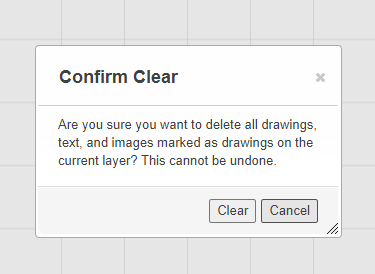
The voice and video function is another excellent free offering from Roll20… when it works. Unfortunately, every time I have tried to utilize this feature, one or more of my participants have had a technical issue. Often it is easier to use another program in conjunction with Roll20 in order to keep up reliable communication, which leaves me with yet another piece of Roll20 that seems like it is just getting in the way.
How Would We Use Roll20?
My first recommendation for successfully utilizing Roll20 is to simply use it for its intended purpose. Recreational role playing games have been growing in popularity as a tool for team building and for the development of soft skills. Dungeons and Dragons can be a powerful tool even though it does not simulate real life. My time spent with the Level Up Gaming League showed me a number of ways in which role playing can provide a playful medium that delivers real-world results.
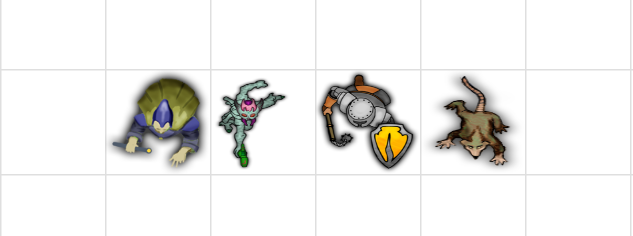
However, I understand that fantasy adventure is not a helpful container for most training situations. For a majority of designers I would recommend Roll20 as an accessible and adaptable digital table top. If Roll20’s specific features are in line with your design needs, you will find a scant few other programs that match Roll20’s free offerings. Particularly if your design requires multiple participants manoeuvring multiple tokens in the same digital space— whether simultaneously, or in turns—then Roll20 could be a perfect fit! But be prepared to caution participants about the wrapper that encompasses all of Roll20’s website, and make sure to have a tutorial available in order to help everyone sift through the unnecessary features.
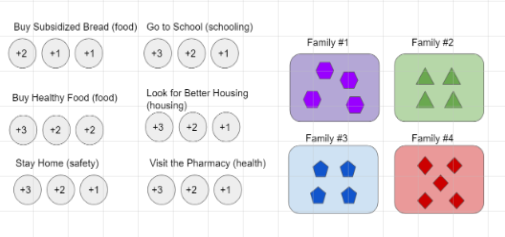
Readers of our full Digital Facilitation Tools Series will begin to notice a trend: as designers, these tools are only what we make of them and Roll20 is no different. It may prove wildly useful for some, while others may want to check our Projects page where they can check out all the posts in the DFT Series.


